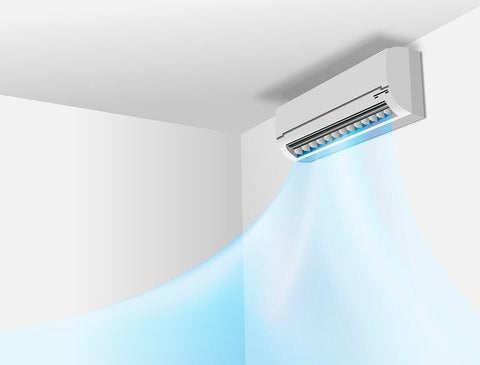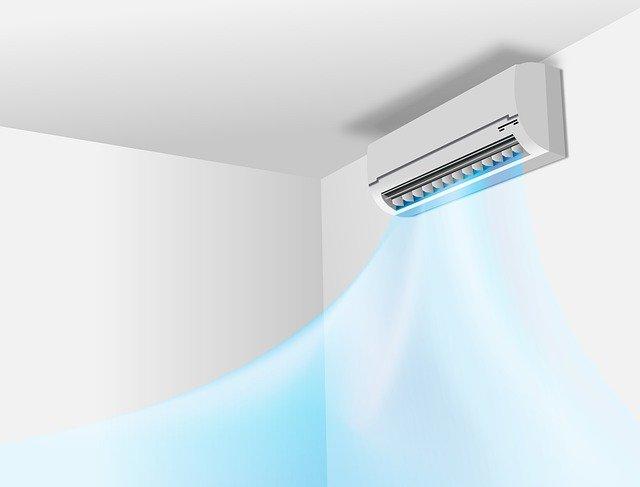
An air conditioner is one of the home appliances you may feel reluctant to put off even when your electricity meter is reading low. This is as a result of its importance in the home.
This may have a twist of difficulty when you notice an increase in the electricity consumption of your home and, from all indications, it appears that your AC is the culprit.
The cause may be the age and condition of your AC, an electrical fault, or other faults. Most times, it is because it is the season of the year when the weather gets so hot and you have to always keep your home cool.
In a bid not to spend so much on electricity, the need to seek strategies to maintain a cool home with little power consumption becomes important.
This article aims to give you different techniques you can use to maximize the benefits of your AC while reducing its electricity consumption. They are extensively explained below.
How to Reduce the Electricity Consumption of Your Air Conditioner

1. Use a Smart Thermostat
Smart thermostats are mostly used for controlling the heating, ventilation, and air conditioning of a home. With the use of a programmable feature, it allows a user to program a schedule that will control the time your appliance should run.
Smart thermostats include features like sensors and Wi-Fi connections that allow a user to control the heating settings from their phones, laptops, and other internet saving devices.
The use of a smart thermostat for your air conditioner helps you to regulate its cooling system. You can use it to turn your air conditioner on and off automatically, set a timer for it, control its operation, and keep a steady temperature either at night or during the day.
When you sum up the little time you leave your air conditioner on with no one in the home, it may amount to a significant time. The energy expended during this time can be prevented with the use of a smart thermostat.
Aside from being able to control the time your AC runs, smart thermostats also record the temperature of the room, the time your AC has been running, and also notify you if the air filter of the AC needs to be replaced. You can get this information and notification using your mobile phone or personal computer.
However, the use of smart thermostats may cause higher energy consumption if not done properly. Special attention should be given when fixing and programming your smart thermostat so that it allows your air conditioner to operate only at the needed time.
2. Peg the Cut-Off Temperature a Little Higher
If you’ve set your AC to run at an ideal temperature in your home or office, it’s time to consider increasing it. Increasing the cut-off limit of the temperature by one or two degrees may result in the saving of energy.
In the working principle of some air conditioners, the compressor stops functioning once the temperature you’ve set for the air conditioner is reached. This leaves only the AC fan in action. The compressor restarts whenever there is an increase in the temperature of the room.
In a situation where the cut-off temperature is lower than the new temperature of the room, the compressor will be prompted to work frequently and over a long time to keep the room at the desired temperature. More power is used as the compressor works longer. And this, in turn, consumes more electricity.
3. Clean the Air Ducts
Air ducts are the passages in your air conditioner that deliver the cooled air externally and remove warm or stale air from the room. The air coming out of the air conditioner will reduce when there’s accumulated dust and dirt inside the ducts.
This will cause your air conditioner to expend more energy in trying to expel air through the narrow pipe caused by the accumulation of dirt. It gets more difficult when the dirt has accumulated in the air filter.
In situations like this, your AC works harder and longer to perform effectively. This does not only require that it consumes more energy, but it also reduces the lifespan of your AC. A simple way out of this is by cleaning the air duct or replacing it with a new one if necessary.
The need to clean the duct is necessary whenever your home undergoes renovation (dust and sand from bricks are likely to enter the air duct), if you’ve noticed constant activities of rodents around your AC (rodents may have deposited feces or brought in objects), or when you suspect the presence of molds in them (when you begin to perceive a stuffy odor).
Contact an experienced technician to get the air duct of your air AC cleaned up.
4. Carryout Regular Maintenance

A proper maintenance routine by an experienced technician will go a long way in ensuring that your AC is in perfect condition and does not consume more power than it should. During servicing, the technician will check for:
- Precision of the thermostat
- Tight and clean connection joints in circuits
- Duct leakage in the central system
- Leakage of refrigerant
- Blocked air ducts and filters
- Clogged drain channel
- General faults
These factors directly or indirectly reduce the efficiency of your AC, which in turn cause more power consumption.
5. Insulate You Room
Insulating your room reduces the need to always switch on your AC. When your AC goes off, it takes a while for the cool air in the room to get warm. You can make the room remain cool longer than it should be by insulating your room using various techniques and materials.
These techniques range from simple processes such as closing the doors and windows, hanging thick curtains, sealing the leak in the windows and door, to a bit more complex materials.
One of these materials is the Blow-In cellulose that is mechanically blown into empty spaces in the structure of your house in order to prevent cool air from escaping your room. It’s mostly made from recycled paper waste which makes it eco-friendly and inexpensive.
6. Retrofit Your Air Conditioner
When it comes to machines, the idea of retrofitting has never been a new one. Retrofitting involves integrating new components into an already existing machine to make it work more efficiently.
Retrofitting your AC is a cheaper alternative to replacing it with a new one. This procedure is inevitable when the inefficiency of your air conditioner can’t be corrected through regular repairs.
7. Upgrade to an Energy Saving Air Conditioner

The daily advancement in technology is aimed at manufacturing technological products that are more portable, efficient, and reliable. In the case of air conditioners, this advancement is mostly aimed at producing air conditioners that consume less power while providing the desired coolness in a home.
When upgrading to a new air conditioner, you may choose to go for an inverter model over a non-inverter model because of its efficiency. In an inverter model, the compressor rotation can vary its speed rotation according to the load (the heat present), thereby reducing the energy it will consume.
Also, check the manufacturer’s brochure for the efficiency of the AC you wish to buy. The efficiency can be determined by checking the ratio of the cooling capacity (W) versus the power input (W). An AC with a high ratio will provide more cooling effect, using little energy.
The energy star rating can also give you a clue of the suitability of the AC. The ratings are usually made after testing and are unique to every country. The ones with higher ratings are marked to have higher efficiency and are the ones to consider.
8. Avoid Heating up the Room
There are lots of activities done in the home that usually lead to an increase in temperature. These activities include doing your laundry (the use of pressing irons, clothes dryers, and so on), cooking (the use of stoves and grillers), and other activities that may raise the temperature of your home.
These activities have a direct impact on the time your AC will work to cool your home. You can save power by keeping the temperature in the home as cool as possible.






Leave a comment
This site is protected by hCaptcha and the hCaptcha Privacy Policy and Terms of Service apply.